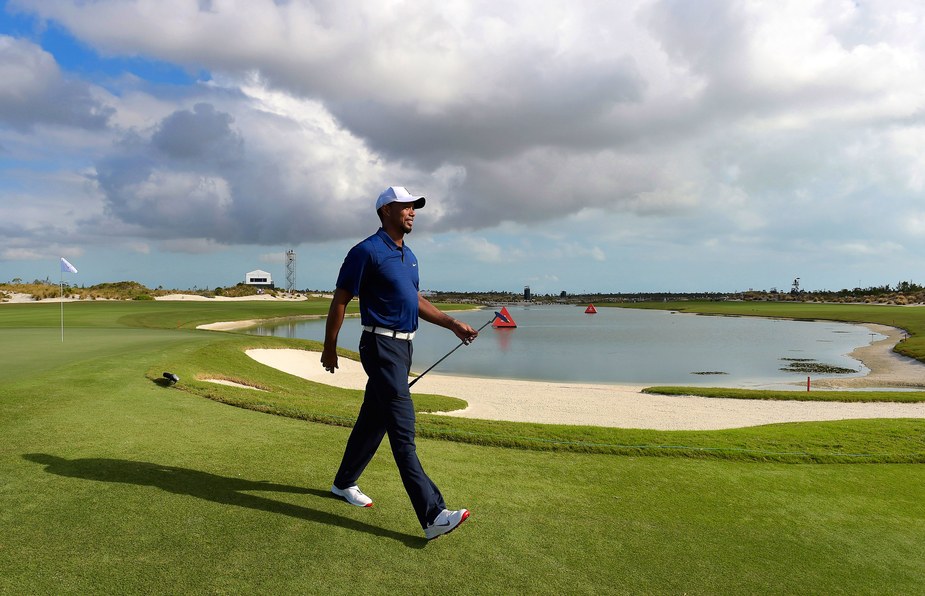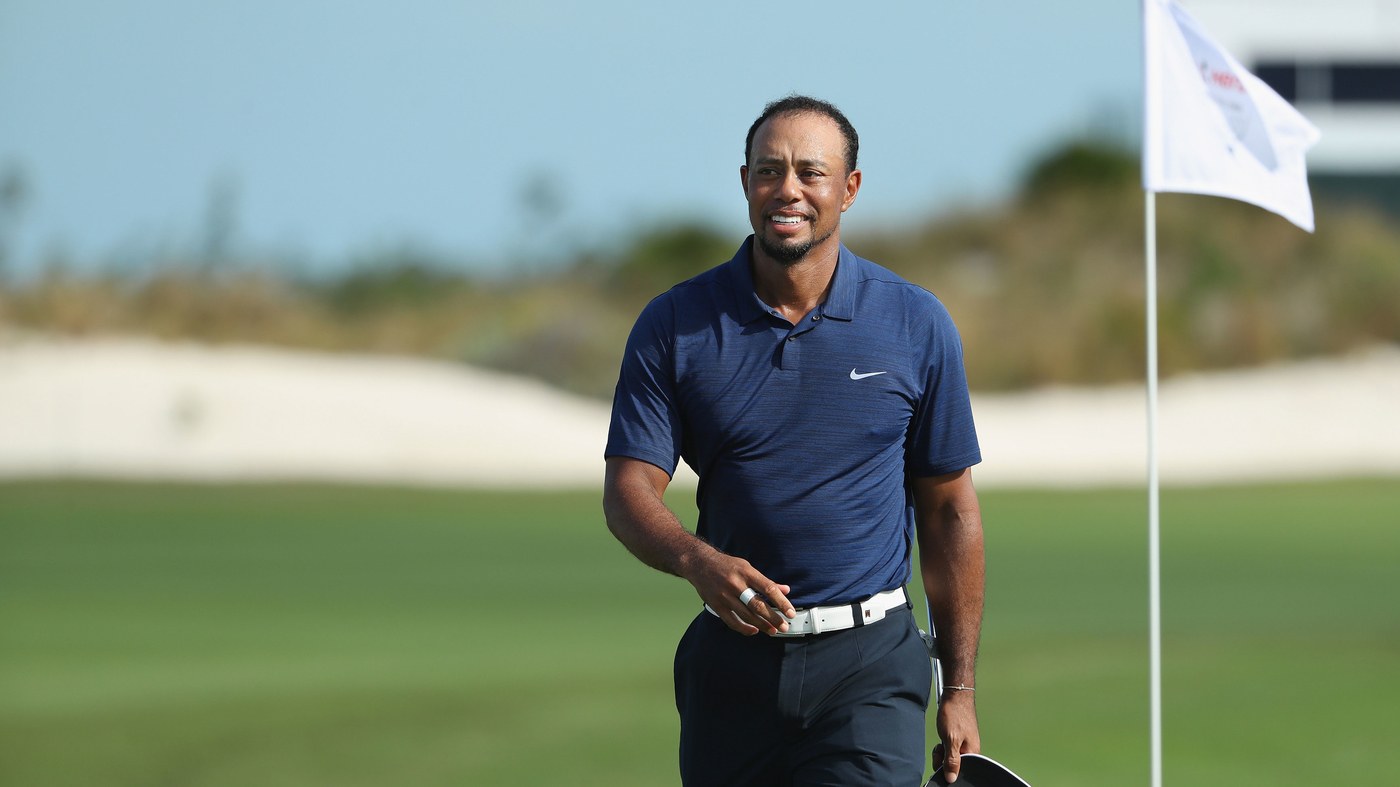…Well, do a lot of things. But most importantly he has to tap back into his former, creative-genius, self.
By Jaime Diaz
What more is there to say about Tiger Woods in anticipation of his return to competition this week at the Hero World Challenge? Not much, although it’s worth it to remind ourselves of a foundational premise: Tiger Woods is a golfing genius.
Beyond the “you know it when you see it” yardstick, genius is a difficult thing to measure. As Walter Isaacson, the culture’s leading chronicler of the phenomena, wrote last week in Time Magazine, genius goes beyond simply being really smart. It helps a lot when someone is demonstrably the best in the world at something, and perhaps the best of all time. Isaacson, who has written best-selling biographies of Ben Franklin, Steve Jobs, Albert Einstein and Leonardo da Vinci, offered two definitional tenets: “The ability to apply imagination to almost any situation” and “to think like an artist and a scientist.”
Woods possessed those tools. He was naturally analytical, described by his father as “systems oriented,” who as a teenager became consumed by the mechanics of the golf swing. But all through his best years, he retained a powerful, childlike gift for visualizing his shot and where he wanted his ball to go. In 2007, he described for Golf Digest the process he developed as a grade schooler when playing in the late evenings with his father.
“Even to this day, when I’m out there struggling and I don’t have my best stuff at all, I’ll go back to, ‘You know what, Daddy, I’m going to put the ball right there. Right there. I’m going to put that little 2-iron right there, Daddy. No problem. I got it.’ Boom, I put it right there …”
And the proof would be in shots like his miraculous hole out from left of Augusta’s 16th green in the final round of the 2005 Masters. When asked to define his greatest weapon, Woods would say, “my creative mind.”
Related: Will Tiger’s body let him down again?
History now indicates, and Tiger might even someday admit, that over time, the artist lost ground to the scientist. As he put himself through several swing changes in the belief it would make him better, the power of his imagination dimmed.
There are indications that as he has recovered from the spinal-fusion surgery he underwent in April, Woods has attempted to reclaim the artist. Ultra patient in his rehab, he reports that he is free of pain. His arrest for driving under the influence in May was embarrassing, but the aftermath might have led to steps that got him more comfortable in his own skin. He put himself on display at the Presidents Cup in late September, and soon after put his swing on display on several videos, exhibiting an action that appears simple and flowing. After a very long time—next year will mark a decade since Woods’ last major victory—there’s a tempting sense the stars are working back toward something resembling alignment.
The question is, can the genius be reawakened, or is it even still there? Golf genius might be the longest-lived variety among professional sportsman, but sports genius is still short-lived compared to non-athletic kinds. At 40, Franklin, Jobs, Einstein and even da Vinci were just entering their primes. Woods, who turns 42 next month, won the Tiger Slam at 25.

Stan Badz/Getty Images
Moreover, just by attempting a sports comeback, Woods is fighting the percentages. Boxers comeback the most, but other than George Foreman, have the saddest success rate. In other sports, for every triumphant return like those of Andre Agassi, Greg LeMond or Tommy John, there are 10 like Bjorn Borg’s that end depressingly.
Even golf, for all its ebbs and flows over long careers, has produced relatively few successful comebacks after long absences from the game. Ben Hogan’s return to win the 1950 U.S. Open after a near fatal car accident is anything but a template. Woods’ own at last year’s Hero World after a 16-month absence offered initial promise but flamed out quickly.
Woods comebacks since his scandal in 2009 have been particularly hard to read, an ever-changing mystery stew of injury, shame, swing changes, short-game issues and even possible drug addiction. Only Woods knows the toll. The percentage guess is that he’s been through too much physically and mentally and has missed too much golf to return to something close to his former station. But the genius argument introduces an X factor that won’t go away.
It’s why fellow tour players, more than the population at large, still give Woods the benefit of the doubt and frankly root for him. Rickie Fowler, who has practiced with Woods at Medalist in Jupiter, recently commented on how far Tiger was hitting his driver. And Brad Faxon, after playing with Woods, President Trump and Dustin Johnson last week, told Golfweek that Woods “looked effortless, he looked free, he had some power.”
And then there is the collective assessment from the very highest level, players who themselves were and remain golf geniuses. I talked to five of them recently for an upcoming story in Golf Digest—Jack Nicklaus, Gary Player, Lee Trevino, Nick Faldo and Johnny Miller. All retired from competition, all multiple major winners, all studiously close Tiger watchers, all acutely aware of the miracles that true greatness makes possible. As the current shorthand says, “game recognize game.”
While the topic of the conversations went beyond how Tiger will do in his return, they all expressed a measured optimism. “Tiger probably won’t be able to swing exactly the way he wants to,” Nicklaus said. “But I think he’ll be able to adjust.”

Stan Badz
Tellingly, all five pulled off climatic late career triumphs after long fallow periods—with Trevino and Miller coming back from injury and out of the television booth—that had led to widespread opinion that each was basically done.
But Nicklaus won his 18th major at the 1986 Masters at age 46, Player his ninth with a closing 64 at the 1978 Masters at age 42, Trevino his sixth at the 1984 PGA Championship at age 44, Faldo his sixth at the 1996 Masters at 38. Although it wasn’t a major, Miller’s victory in 1994 at Pebble Beach at age 46 was the most astounding.
To use Nicklaus’ euphemism, they all “adjusted.”
Miller has long said that most great players have two primes. The first, during which the bulk of the career record is typically built, is founded in sheer talent. The second is shorter and less productive, but for the player himself, more satisfying because it requires overcoming the inevitable doubt that comes with age and experience. And it provides a genius the ultimate opportunity to capitalize on his gift of imagination. In his final victory at Pebble, Miller fought off a serious case of the putting yips down the stretch by alternately putting with his eyes closed, or making believe he was one of his four sons as a 10-year-old.
As they spoke of Woods, what all five Hall of Famers expressed was a sincere wish that a pain-free Tiger will be able to again activate his own imagination, finally get out of his own way and once again fully trust his genius. And let what took him so incredibly far take him, unimpeded, as far as it will.









